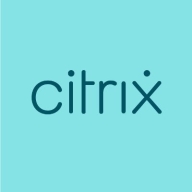

Citrix XenServer and Nutanix AHV compete in the virtualization platform category, with each offering unique advantages. Nutanix AHV may seem to have the edge due to its open-source nature, seamless integration, and high manageability features.
Features: Citrix XenServer is a free virtualization platform that includes features like a Windows-based management application through XenCenter, strong performance for Windows and Linux, and active directory integration. Nutanix AHV stands out for its open-source platform with integrated compute and storage services, user-friendly management through the Prism console, and built-in data protection.
Room for Improvement: Citrix XenServer needs better Linux guest support, reduced Windows dependency, and more high-availability features. It also requires robust hardware and better third-party integration. Nutanix AHV would benefit from improved cloud integration, comprehensive web-based administration, and enhanced migration and orchestration. It also needs more support for Red Hat solutions and third-party backup tools.
Ease of Deployment and Customer Service: Citrix XenServer primarily deploys on-premises with some hybrid cloud options and offers community-driven support for its free version. Nutanix AHV provides flexible deployment options and is praised for good support, although there are issues with response times and complexity.
Pricing and ROI: Citrix XenServer offers a basic free edition with optional paid support, which can be costly as infrastructure grows. It is generally cost-effective but pricier than some competitors. Nutanix AHV is free as part of its hyper-converged infrastructure, eliminating additional licensing fees, though the complete package can be more expensive. Both solutions offer good ROI, with savings in hardware and management costs.
My clients generally maintain their Citrix infrastructure without shifting, suggesting stability and reliable operation as Citrix XenServer is fully established.
With valid licenses, we can access hotfixes, service packs, knowledge base, self-help tools, diagnostics, downloads, live chat, and phone support.
They do not provide adequate support for midsize businesses.
There appear to be very few engineers at Citrix who understand the problems.
Their engineers are excellent and provide great supportability.
They provide prompt and quality responses.
Familiarity with Linux can enhance its performance and usability.
Citrix XenServer is definitely scalable enough.
We can scale our systems easily without any downtime, making it a highly effective solution for dynamic environments.
Nutanix AHV Virtualization is very scalable; however, I might be underutilizing its capabilities.
It runs very stably.
I haven't had any significant issues with Citrix XenServer installations over the last 10-15 years.
The solution is very stable.
Issues such as patch delays and the OVF format challenge affect its stability rating.
I would give the stability a seven out of ten at the moment, primarily due to the issues I've had with updates.
Although the product is technically competitive, it is not widely known or used due to poor marketing.
Citrix needs to improve the hypervisor, specifically in security and performance.
We can implement high availability and live migration with pools, along with security and backup to enable role-based access control for safer management.
This delay in patching creates risk, especially for government projects that require timely updates.
These menus often show options like host, memory, and disk, however, they fail to provide insight into what's happening.
Using Lenovo hardware seems problematic with Nutanix AHV Virtualization, which demands careful consideration during updates.
It is cheaper compared to its competitors.
Organizations save substantial money because competing solutions, such as VMware, cost double or triple.
The pricing and licensing policy of Citrix XenServer is not transparent and quite confusing.
This has been advantageous as it does not require additional licensing costs for the hypervisor, contributing to overall cost savings.
Other solutions like Citrix and VMware have seen a significant price increase, whereas Nutanix hasn't increased as dramatically.
The pricing was reasonable compared to other competitors, though the storage was expensive.
The benefits from using Citrix include increased productivity, as users don't have to search for what they need to open.
The most valuable feature is transferring and sharing applications that allow users to move files between devices, including smartphones, tablets, and computers without needing USB cables, internet connections, or data usage.
It provides secure access to applications and resources, which is crucial for us and our clients.
It is easier to manage than VMware in some ways, providing a good level of interaction.
The technology behind the backups is very efficient, enabling a reliable virtual environment.
| Product | Market Share (%) |
|---|---|
| Nutanix AHV Virtualization | 7.6% |
| Citrix XenServer | 4.8% |
| Other | 87.6% |


| Company Size | Count |
|---|---|
| Small Business | 29 |
| Midsize Enterprise | 8 |
| Large Enterprise | 18 |
| Company Size | Count |
|---|---|
| Small Business | 20 |
| Midsize Enterprise | 15 |
| Large Enterprise | 22 |
Citrix XenServer provides virtualization with high availability and robust security, offering seamless VM migration and centralized management through XenCenter. Its expansive compatibility and integration enhance its appeal, particularly for SMBs.
Citrix XenServer is recognized for its user-friendly virtualization capabilities, facilitating dynamic scalability and efficient resource management. It supports a wide range of operating systems and integrates with Citrix solutions for improved operations. Businesses benefit from its affordability and ease of deployment. Despite its strengths, users seek improvements in third-party tool integration, network and backup management, and storage flexibility. High costs, limited Linux support, system complexity, technical support, and hardware compatibility remain challenges. An updated and intuitive interface is in demand for more seamless operations across platforms.
What are the key features of Citrix XenServer?In diverse industries, Citrix XenServer is leveraged for server and desktop virtualization, cloud automation, and infrastructure management. Many deploy it for virtual desktop infrastructure, application delivery, on-premises data centers, and to support Citrix application delivery like XenApp and XenDesktop. Enterprises migrating from VMware often find Citrix XenServer cost-efficient for these applications, serving as a main computing platform for enterprise applications including ERP systems and SQL Servers.
We monitor all Server Virtualization Software reviews to prevent fraudulent reviews and keep review quality high. We do not post reviews by company employees or direct competitors. We validate each review for authenticity via cross-reference with LinkedIn, and personal follow-up with the reviewer when necessary.